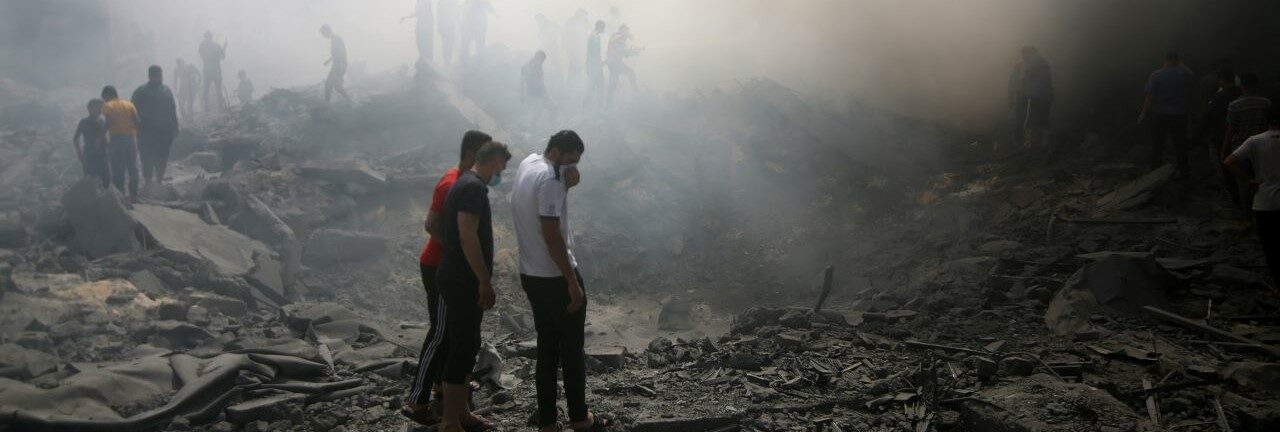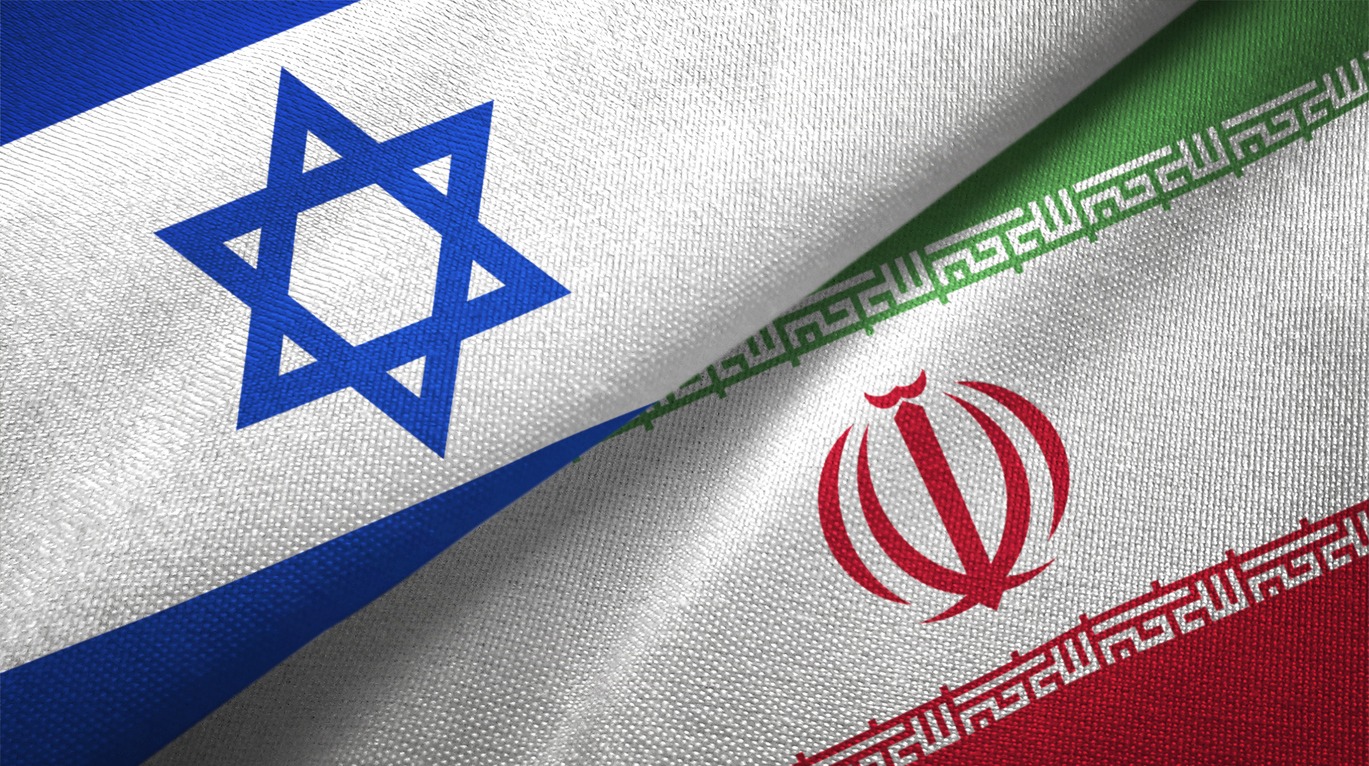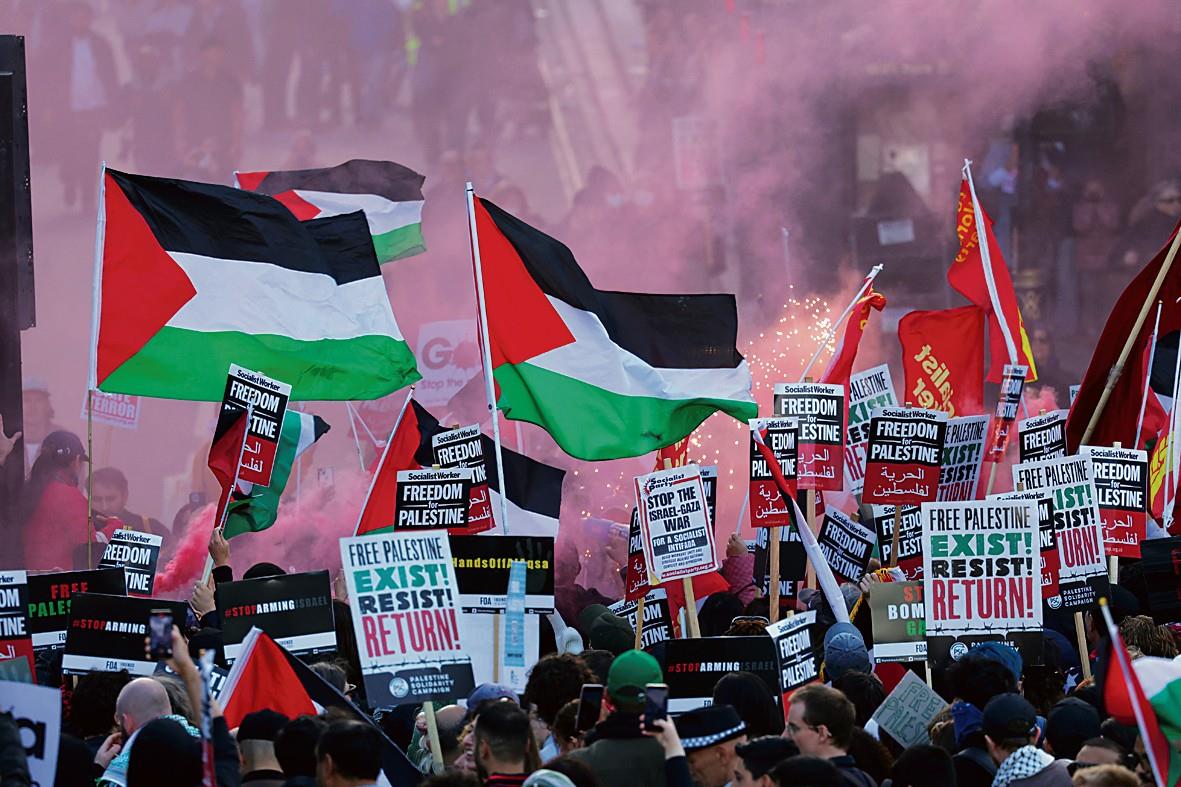Turning the Gaza Ceasefire into a Circuit-Breaker
TODA PEACE INSTITUTE
APLN member Ramesh Thakur wrote on the Israel-Hamas war and argued that Israelis and Palestinians have to somehow draw a line under the past – or they will face a future of chaos. The original post can be found on the Toda website here.
This article was first published by the Australian Financial Review on 25 November and is republished with the permission of the author.
The deal to pause the Gaza war for four days in order to swap 50 Israeli hostages for 150 Palestinian prisoners will reshape the conflict’s dynamics.
Israel’s immediate strategy in Gaza has had five goals: dismantle Hamas; recover the hostages; reduce risks to Israeli soldiers; limit civilian casualties; and avoid widening the war beyond Gaza.
Hamas’ objectives in launching the attacks on October 7 were to kill, rape, maim, mutilate, burn, and kidnap as many people as possible; undermine Israelis’ confidence in their government’s ability to protect them; provoke a reaction of extreme violence from Israel that would kill large numbers of civilians and inflame the Arab street; enrage Muslims worldwide and flood the streets of Western cities with massive protests; isolate Israel internationally; dismantle the Abraham Accords; and disrupt the process of normalisation of relations with Arab states.
Israel is engaged in the most challenging and fraught urban war in living memory. Weeks of air strikes to degrade Hamas’ military capability and infrastructure were followed by a ground assault that has given Israel control of northern Gaza. The battle plan was to split Hamas from civilians, shift civilians to the south, and attack the fighters. The second has been only partially successful because Hamas is so deeply enmeshed in the general population.
Progress in the accompanying information war is more mixed. Video feeds of the carnage drains support for ongoing military hostilities. The Israeli tactic of taking international media into captured areas to display evidence of Hamas’ guilt in violating the laws of war, declassifying intelligence, and publishing video footage and communications intercepts, has had only limited success in countering Hamas’ propaganda that Israel is committing war crimes amounting to genocide.
In the combined military-cum-narrative wars, Israel is caught in the classic pincer trap of insurgencies: it loses by not winning but Hamas wins by merely surviving.
The imbalance could worsen as the battlefield shifts to southern Gaza. Where will the civilians go from there, with neighbouring countries refusing entry? Israel might need to more visibly prioritise the delivery of humanitarian relief and supplies through safe corridors.
Time works against Israel also because the 300,000 reservists need to return to their day jobs to avoid collapse of Israel’s high-tech economy. Yet, Hamas has discovered the limits to support from Iran and Hezbollah.
The pause in fighting enables both sides to take stock of the situation and recalibrate short- and long-term goals.
If the truce is extended to enable the release of around a dozen hostages per day, on the one hand Hamas will buy valuable time to regroup, rearm, reposition arms and fighters, and resume attacks on Israeli civilians.
On the other, the longer the pause, the more politically difficult it will be for Israel to resume the war. That would frustrate its primary objective of destroying Hamas’ hold over Gaza and its capacity to threaten Israel’s security from there.
The asymmetric costs and gains will embolden repeats of October 7 with the message that Israel can be hit with savage attacks, but any retaliation will force a ceasefire before the job is done.
The only way to stop that is to re-establish the previously existing dual deterrence: of Hamas attacks by superior Israeli intelligence and retaliatory capability, and of Hamas’ regional allies by the threat of US intervention.
For this, Israel must first answer three questions regarding the failures of intelligence, physical barriers at the border, and the army’s reaction time on October 7.
It’s also hard to see Benjamin Netanyahu, captain of the ship of state on the day of the worst attacks on Jews since the Holocaust, staying in office. Especially if an inquiry should confirm allegations of his complicity in shoring up Hamas against the Palestinian Authority.
Israel will also come under pressure to lift the land, sea and air blockade of Gaza in force since 2007 with devastating humanitarian consequences for its 2.3 million people. This is why the UN describes Gaza as “occupied Palestinian territory”. Otherwise, the narrative of Gaza as the world’s biggest open-air prison will persist.
The continual expansion of Jewish settlements in the West Bank must also come to an end. Accommodating internal tensions in domestic Israeli politics is exacting too high a price in foreign policy. Hopefully, Israel can also resume the search for normalised relations with key Arab countries such as Saudi Arabia.
Meanwhile, Israel must accommodate to the new normal of a dwindling international support base on two fronts. Within the West, a clear generational divide has opened up between younger people who are converts to the Palestinian cause at the expense of Israel.
Globally, as the West steadily loses its capacity to dominate the narrative on world affairs, it and Israel will have to come to terms with how the history of Israel–Palestine relations is perceived.
Many believe the guilt-ridden Christian West paid reparations for the Holocaust to the Jews in Palestinian currency. The UN General Assembly Resolution 181 (1947) that approved the partition plan to create the state of Israel by a 33-13 vote was a Western-dominated body at the time. The dissenting votes better reflected the balance of UN membership in the post-colonial world.
In practice, this means a double recognition of Israel’s right to exist as the world’s only Jewish homeland and the Palestinians’ right to their own state. The military destruction of Hamas may be necessary, but will not suffice without diplomacy and negotiations that satisfy the bottom-line needs of each, while falling short of maximalist demands of both sides.
We can all choose to look backward and entrench and internalise narratives of victimhood and grievance. Attempts to reverse history using the benchmark of current notions of social justice imbued with decolonisation ideology will guarantee the biggest period of volatility and violence humans have ever known.
Or, we can look forward, draw a line under historical injustices, and work together to create a future of tolerable coexistence.
Image: Anas-Mohammed/shutterstock.com




